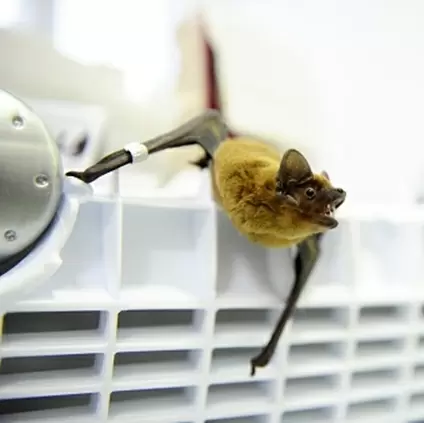40% bat species in Asia still unidentified, may host new viruses
Beijing
30-March-2022

Photo: IANS
There are nearly 40 per cent unknown species of horseshoe bats in southeast Asia and China, according to a study.
In the paper published in Frontiers in Ecology and Evolution, the team highlighted the need for further work to describe species across the region and better understand their cryptic diversity, and underscoring the unappreciated cryptic diversity in the group.
Horseshoe bats (Rhinolophidae) are considered the reservoir of many zoonotic viruses - which jump from animals to people - including the close relatives of the viruses that caused severe acute respiratory syndrome and Covid-19.
Identifying bat species correctly might help pinpoint geographical hotspots with a high risk of zoonotic disease, Shi Zhengli, a virologist at the Wuhan Institute of Virology in China, was quoted as saying to Nature.
Better identification of unknown bat species could also support the search for the origins of SARS-CoV-2 by narrowing down where to look for bats that may harbour close relatives of the virus, added study co-author Alice Hughes, a conservation biologist at the University of Hong Kong.
The closest known relatives of SARS-CoV-2 have been found in Rhinolophus affinis bats in Yunnan province, in southwestern China, and in three species of horseshoe bats in Laos, the report said.
Watch This TWL Video
To better understand the diversity of bats in southeast Asia and find standardised ways of identifying them, Hughes and her team captured bats in southern China and southeast Asia between 2015 and 2020.
They took measurements and photographs of the bats' wings and noseleaf - "the funky set of tissue around their nose", as Hughes describes it - and recorded their echolocation calls. They also collected a tiny bit of tissue from the bats' wings to extract genetic data.
To map the bats' genetic diversity, the team used mitochondrial DNA sequences from 205 of their captured animals, and another 655 sequences from online databases - representing a total of 11 species of Rhinolophidae.
The researchers found that each of the 11 species were probably actually multiple species, possibly including dozens of hidden species across the whole sample.
Hidden, or "cryptic", species are animals that seem to belong to the same species but are actually genetically distinct. For example, the genetic diversity of Rhinolophus sinicus suggests that the group could be six separate species, the report said.
The findings corroborate other genetic research suggesting that there are many cryptic species in southeast Asia, the report said. - IANS
More Headlines
Indian Startup Founder Salaries Drop 25% Amid Funding Winter
DMK to Launch Statewide Protests Against NEP’s Three-Language Formula
Air India Faces Backlash as Elderly Passenger Denied Wheelchair Falls, Lands in ICU
Shiv Nadar Transfers 47% Stake in HCL Promoter Firms to Daughter Roshni
Telangana Cabinet decides to develop Future City on 30,000 acre
Indian Startup Founder Salaries Drop 25% Amid Funding Winter
DMK to Launch Statewide Protests Against NEP’s Three-Language Formula
Air India Faces Backlash as Elderly Passenger Denied Wheelchair Falls, Lands in ICU
Shiv Nadar Transfers 47% Stake in HCL Promoter Firms to Daughter Roshni
Telangana Cabinet decides to develop Future City on 30,000 acre










